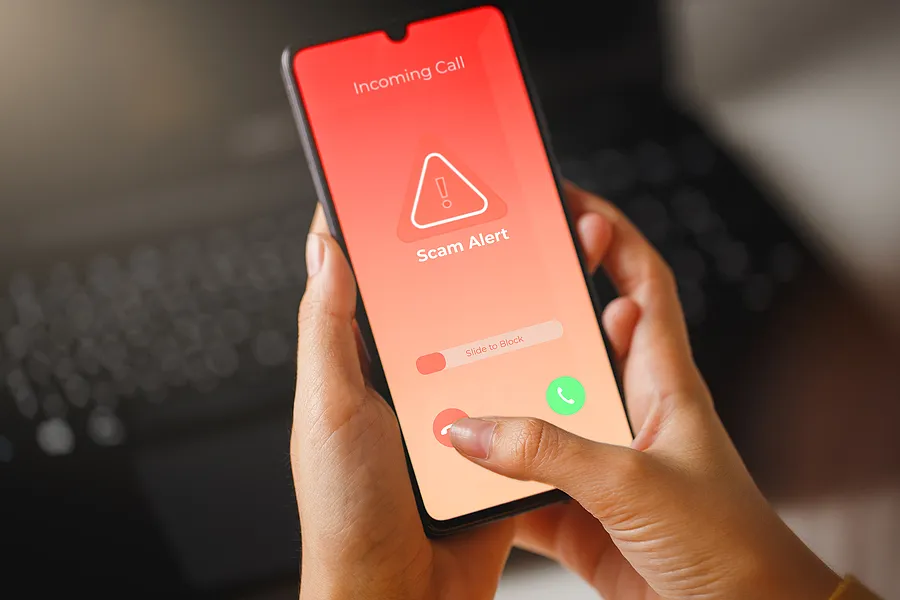Who’s Calling from 805‑354‑1683? A Complete Guide
You look at your phone, and there it is: a call or voicemail from 805‑354‑1683. You didn’t recognize the number, and you’re left wondering—who is calling, and is it safe to answer? With the increase in phone scams, spoofed caller IDs, and telemarketing blitzes, unfamiliar numbers are a national nuisance. But amidst this noise, some phone numbers gain particularly bad reputations—and 805‑3541683 is one of them.
Across forums, complaint sites, telecom watchdogs, and reverse-lookup services, this number is flagged repeatedly. Reports range from automated robocalls impersonating legal or financial authorities, to aggressive telemarketing pitches, to single-ring “ping” scams aimed at prompting callbacks. The number might look local—beginning with the familiar California area code 805—but that familiarity could be a dangerous illusion.
In this exhaustive guide, we’ll explore:
- Why 805‑354‑1683 keeps popping up
- Risks and real experiences tied to its calls
- How to definitively spot scam behavior
- Proven strategies to screen, block, and report it
- What to do if you’ve already engaged with the caller
- How you can help fight similar scams
By the end, you’ll have 21st-century phone literacy—so next time you see a number like this pop up, you’ll know exactly how to respond.
1. The 805 Area Code: More Than Just a Prefix
Area code 805 covers California’s Central Coast, including Ventura, Santa Barbara, San Luis Obispo, and adjacent regions. Created in 1957, the code has since mirrored the area’s evolving demographics—from coastal tourism to college towns and tech influx.
1.1 Local Identity, National Exploit
Scammers exploit local area codes like 805 to increase the odds someone answers. Known as “neighbor spoofing,” this tactic uses familiar prefixes to build a false sense of trust .
1.2 Legitimate Use vs. Spoofed Origins
Some legitimate businesses—plumbers, clinics, appointment services—use local numbers, including those beginning with 805‑3541683. But spoofing allows scammers to insert malicious calls into the local ring, making each call suspect.
2. What We Know About 805‑354‑1683
2.1 Report Summary
- Robocalls and Voicemails: Users report pre-recorded warnings about legal trouble, debt collection, and cryptocurrency issues.
- Wangiri Campaigns: One-ring setups aimed at prompting callback to premium lines.
- Telemarketing Outreach: Some calls appear like commercial pitches; other times they’re cloaked as friendly surveys or charity solicitation .
- Impersonation Scams: Frequent themes include IRS/legal threats and sudden “security” alerts for crypto exchanges like Kraken or Coinbase.
2.2 Real-World Echoes
Forums and complaint boards note repeated instances of voicemail threats, “press 1 to talk to agent” prompts, and terse high-pressure messages. These are classic social-engineering tricks meant to instill fear and force hasty actions.
2.3 A Grain of Truth
Not all calls from this prefix are dubious—many are legitimate local businesses. But the sheer volume of flagged interactions suggests exercising skepticism every time this number calls.
3. Common Scam Patterns to Watch For
Regardless of the caller ID, understanding scam tactics is key.
3.1 Urgency & Threats
Scammers often claim immediate consequences—arrest, lawsuit, account closure. The goal: pressure victims before they think. The 805‑354‑1683 number is notorious for these threats.
3.2 Requests for Personal or Financial Data
No legitimate agency will cold-call for sensitive data. Requests for SSNs, bank details, or account logins are red flags to hang up immediately.
3.3 “Press 1” and Callback Games
“Press 1” prompts entice engagement and verify numbers for future targeting. Phone ping tactics generate callback numbers to exploit .
3.4 Impersonation of Institutions
Faking IRS agents, law enforcement, or major crypto platforms is a tried-and-true scare tactic seen in calls traced to this number.
3.5 Spoofing Techniques
Voice-over-IP (VoIP) tech and Caller ID spoofers allow scammers to mask origins, overlaying unknown numbers with 805 local prefixes .
4. Evaluating the Danger: Risks vs. Real Calls
A. Psychological Toll
Repeated harassment, fear of fraud, and the mental fatigue of screening calls can erode well-being.
B. Financial Exposure
Scams can lead to direct financial loss—gift card scams, bank wire transfers, cryptocurrency extortion—or downstream identity theft from shared info.
C. Harassment & Data Feeds
Even unproductive calls may feed your number into more scam lists, escalating nuisance.
D. Not All Calls Are Bad
If you’re expecting a plumber, doctor, or local repair person, verifying via business listings or callback codes can confirm legitimacy .
5. How to Respond When You See the Number
5.1 Pre-Answer Protocol
- Let it go to voicemail. Scammers rarely leave messages—legitimate callers usually do.
- Screen unknown calls via built-in iOS/Android and let your device filter what’s likely spam.
5.2 If It’s Voicemail
- Don’t call back.
- Check the message: is it specific and verifiable, or vague and urgent? Delete suspicious ones.
5.3 If You Answer
- Be polite but firm: “I’m not interested,” and hang up.
- Never engage or provide info—anything you share might be recorded and used to manipulate you later.
5.4 Blocking Numbers
- iPhone: Recents → “i” → Block this Caller
- Android: Call log → Details → Block/report spam
- Carrier tools: Many networks offer free or premium spam-blocking services.
5.5 Third-Party Tools
- Truecaller: crowdsourced identification and spam scoring.
- Hiya: Caller ID + spam detection.
- Nomorobo: Automated VoIP robocall blocker.
5.6 Proactive Filtering
Use settings like “Silence Unknown Callers” on iPhones. Android apps like YouMail can block entire categories.
5.7 Reporting the Call
- FTC: Visit reportfraud.ftc.gov.
- FCC: File at fcc.gov/complaints.
- Carrier: Many allow SMS reporting or app submissions.
- Local authorities: Provide call logs and recordings if harassment persists.
6. If You’ve Engaged: Recovery Steps
Even a slip-up can be reversed.
6.1 Immediate Actions
- Contact your financial institution—freeze cards, set fraud alerts.
- Change passwords on compromised or related online accounts.
6.2 Monitor Accounts
- Review checking/savings and credit reports.
- Consider placing a 90-day fraud alert with national credit bureaus.
6.3 Identity Theft Reporting
- File a report with local police.
- Report to the FTC’s IdentityTheft.gov portal.
6.4 Legal and Support Resources
- Consult consumer protection or elder fraud hotlines.
- Connect with nonprofits that assist scam victims.
7. Long‑Term Habits for Phone Safety
- Guard Your Privacy
- Never share SSNs or account numbers.
- Ask yourself, “Is this caller verified?”
- Never share SSNs or account numbers.
- Regularly Update Your Tech
- Install latest OS patches.
- Update and audit security settings.
- Install latest OS patches.
- Use Strong Credentials
- Unique passwords.
- MFA for sensitive services.
- Unique passwords.
- Educate Friends and Family
- Especially seniors and frequent-phone users.
- Share knowledge and safe-call guidelines.
- Especially seniors and frequent-phone users.
- Stay Alert to Scam Trends
- Subscribe to FTC scam alerts.
- Watch reputable security blogs.
- Subscribe to FTC scam alerts.
- Promote Community Awareness
- Post local alerts on Nextdoor, Facebook neighborhoods.
- Report publicly flagged numbers.
- Post local alerts on Nextdoor, Facebook neighborhoods.
8. Beyond 805‑354‑1683: A Systematic Threat
- Neighbor spoofing extends across all area codes, not just 805.
- Robocall farms dial thousands daily, using AI scripts and VoIP.
- Data runoff: even unanswered calls feed the scam economy.
- You are the front line—your skepticism, blocked numbers, and reports reduce scammers’ reach.
9. Frequently Asked Questions (FAQs)
Q1: Is 805‑354‑1683 always a scam?
A: No—but most flagged calls with threatening or unsolicited content are scams. Reasonable to treat it as suspicious.
Q2: Why does the call appear local?
A: Using 805 increases pick-up likelihood—a tactic called neighbor spoofing
Q3: Can scammers spoof legitimate local services?
A: Yes. They can imitate familiar businesses, utilities, or government offices.
Q4: Will blocking the number stop all calls?
A: Scammers can change numbers. But each blocked variant protects you.
Use carrier-level and app-based blocking for layered defenses.
Q5: What if I answered and it seemed genuine?
A: Validate by hanging up and calling the institution via known official contact info—not the number that called you.
Conclusion
805‑354‑1683 is emblematic of modern tele-scam tactics: localized spoofing, urgent tone, mixed messages, and deceptive spoofed origins. While legitimate businesses occasionally use similar prefixes, the high volume of alarming reports—a sampling of voicemail threats, ftc flags, robocall behaviors, “press 1” traps, and financial impersonation—makes this specific number untrustworthy .
Staying safe isn’t about paranoia—it’s about effective habits: screening calls, blocking repeat offenders, reporting suspicious activity, and taking swift recovery steps if compromised. And spread the knowledge—phone scams thrive on silence.
So next time you see 805‑354‑1683? Think twice. Let it go to voicemail, vet the message, and protect both your gut and your data.
Nadeshda Ponce A Visionary Leader in Art and Community Transformation





